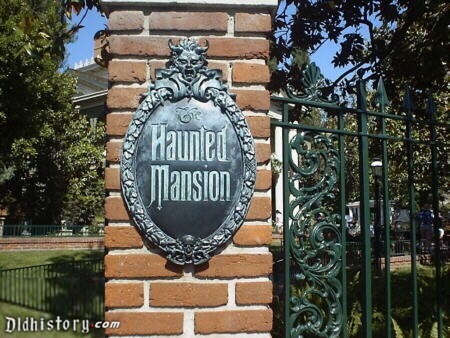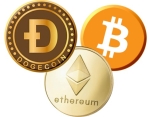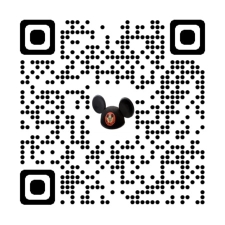How Haunted Mansion Popularized The Haunted House And Changed Halloween Forever
ID:
TMS-5164
Source:
SFGate
Author:
Julie Tremaine
Dateline:
Posted:
Status:
Current
Think of Halloween’s most basic elements: candy, costumes, spooky parties and haunted houses designed to scare you for fun. But what if those haunted houses didn’t exist? It turns out we have Walt Disney to thank for revolutionizing modern Halloween entertainment. And it all started with Disneyland’s Haunted Mansion.
Scary stories have existed for as long as people have been telling stories, and attractions focusing on gruesome deaths date back to the early 1800s in Europe, Chris Heller wrote for Smithsonian. But, in his interview with Lisa Morton, author of “Trick or Treat: A History of Halloween,” Heller contends that before Haunted Mansion opened in 1969, there was no true attraction that blended scares with high-quality illusions in the way that Disneyland’s dark ride does.
“A lot of the professional haunters will point to one thing, and that’s Disneyland’s Haunted Mansion. It’s the start of the haunted attraction industry,” Morton told Heller.
In its design phase, Haunted Mansion was an unusually contentious project, largely because in the beginning, no one quite knew what to do with the idea. Having a haunted house attraction was part of the original plan for Disneyland, but it was shelved for the park’s 1955 opening because of time constraints and financial issues. As the park’s success became apparent, however, the concept was put back into production.
“It was Walt’s idea,” Rolly Crump told SFGATE in 2021. Crump was one of the original Imagineers who worked with Disney on Haunted Mansion. “He loved all that. He loved to scare people. He said, ‘People love being scared,’ and that one of the things we should be doing is to scare people.”
But beyond knowing he wanted a spooky attraction, Disney didn’t really know what he wanted. Essentially, as Crump wrote in his memoir “It’s Kind of a Cute Story,” Walt told a group of Imagineers to come up with any scary, weird ideas they could think of.
Eventually, there were two teams led by different art directors: Marc Davis felt the theme should be happy and funny ghosts, and Claude Coats believed it should be frightening. Separately, Crump was paired with Yale Gracey, who invented many of the illusions used in early Disneyland rides, including the flaming city in Pirates of the Caribbean.
“Walt just wanted us to be left alone, and he gave us the freedom to do whatever we wanted,” Crump told SFGATE. “We had our own little studio that we just filled with all sorts of crazy stuff.” Crump and Gracey focused on creating things as bizarre as they could imagine and built models so frightening that the janitors refused to clean their workshop (especially after the two Imagineers rigged all their inventions to go on in the middle of the night to prank the overnight workers).
What they were doing, according to Crump, was following Disney’s direction. If he was tasking Imagineers with scaring park guests, they should deliver.
“So there was a little battle there,” Crump added.
Eventually, the scariest of Crump and Gracey’s imaginings were spun off into an attraction called the Museum of the Weird, planned to be a walk-through attraction attached to the ride. But because Disney was its biggest cheerleader, the Imagineers who were against the project ended its development after Disney died during its concept stage.
What eventually opened in 1969, three years after Disney’s death, was a blend of those disparate philosophies. In the stretching room, there may be a man standing on an about-to-explode keg of dynamite, but he’s wearing comically striped boxer shorts. And while there are macabre monsters popping out from behind headstones in the cemetery scene, they do so to a jaunty, upbeat rendition of “Grim Grinning Ghosts.”
The ride was revolutionary. There were already dark rides at carnivals and uninspired walk-through spooky attractions, Morton wrote in “Trick or Treat,” but “what made the Haunted Mansion so successful and so influential, however, was … its use of startling new technologies and effects. Ghosts were no longer simply sheets hung in a tree, but were instead actual shimmering translucent figures that moved, spoke and sang. A witch wasn’t just a rubber-masked figure bent over a fake cauldron, but a completely realistic bodiless head floating in a crystal ball, conducting a complex séance.”
Before Haunted Mansion, the quality of practical effects in haunted house attractions was much lower. Gracey, the namesake of the ride’s Master Gracey, had a background in stage magic and was a member of the storied Magic Castle. He introduced an old magician’s illusion into theme parks and significantly improved upon the quality of the practical effects being used at the time.
Pepper’s Ghost, invented by a stage magician in the 19th century, utilizes a series of mirrors to project reflections that look like ghostly apparitions. It’s how all the “ghosts” in the ballroom scene appear to be dancing, playing the organ and having their spectral dinner: They’re reflections of real moving animatronics underneath the platform where the “doom buggy” ride cars pass through.
That level of ingenuity, Heller said, transformed the haunted house’s standing in popular culture. “The haunted house didn’t become a cultural icon,” he wrote, “... until Walt Disney decided to build one.”
It reportedly inspired neighboring park Knott’s Berry Farm to launch its own spooky Halloween event the next year in 1970, which paved the ground for today’s scary theme park events like Universal Studios’ Halloween Horror Nights and Disneyland’s own Oogie Boogie Bash.
“The Haunted Mansion is amazing for the attraction that it is, given the number of hands that were competing for creative leadership on it,” Disney Imagineer David Fisher said on the Haunted Mansion episode of Disney+ show “Behind the Attraction.”
Heller said more than 82,000 people rode Haunted Mansion in a single day just after its opening more than 50 years ago. Today, more than 2,600 people experience the ride every hour on a busy day, according to theme park information site TouringPlans.com.
There is one issue, though, that none of the Imagineers caught. There aren’t actually 999 happy haunts in the mansion, as claims the Ghost Host as he narrates into your doom buggy as you ride. We know. We counted.
Attractions Referenced In This Article:






